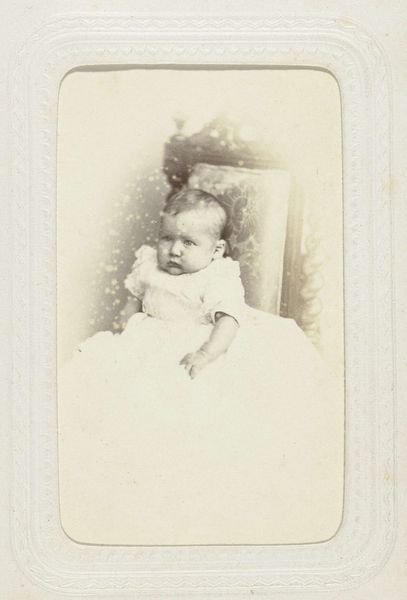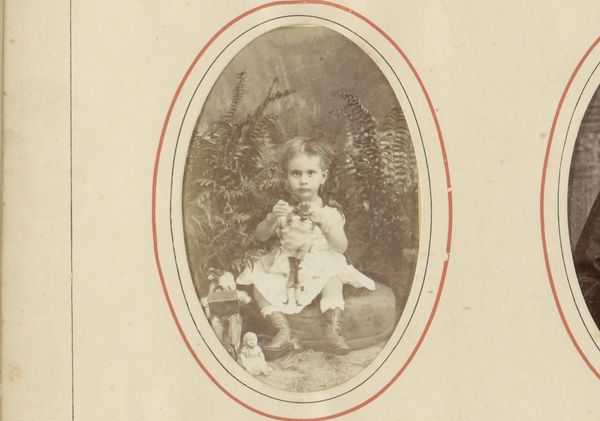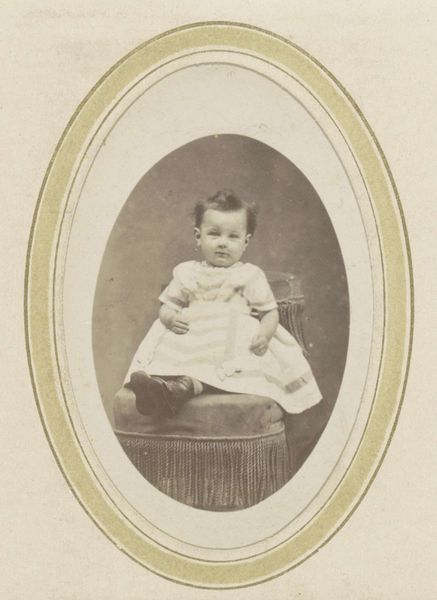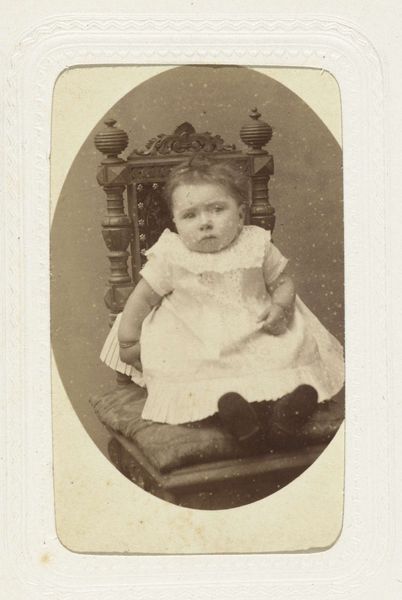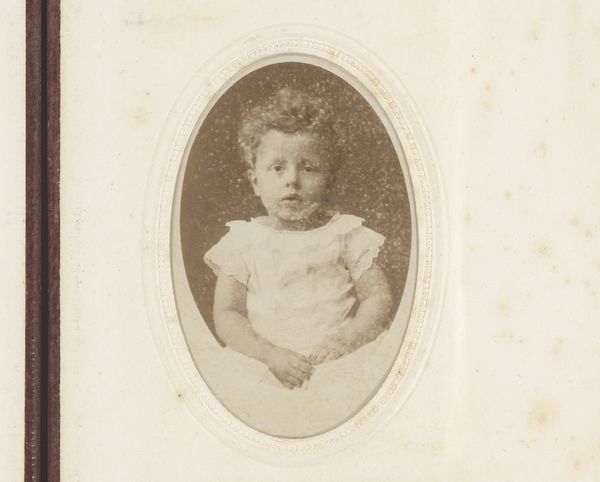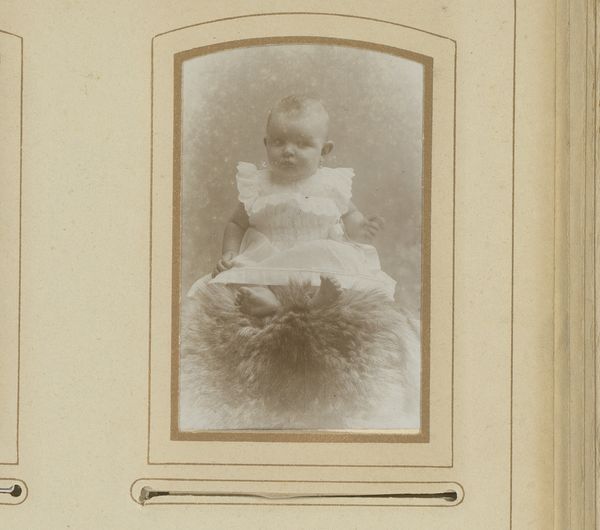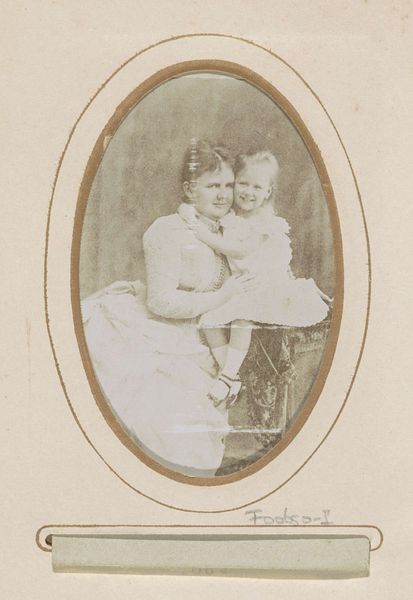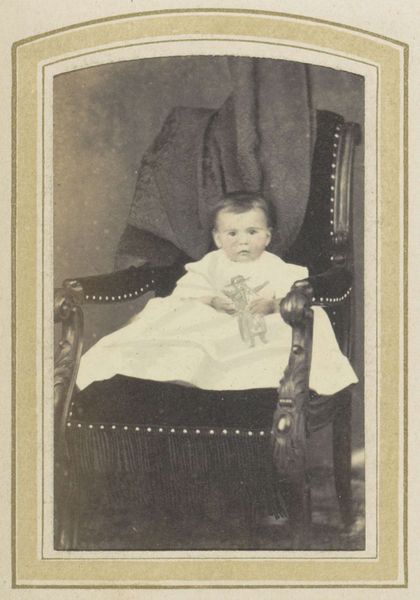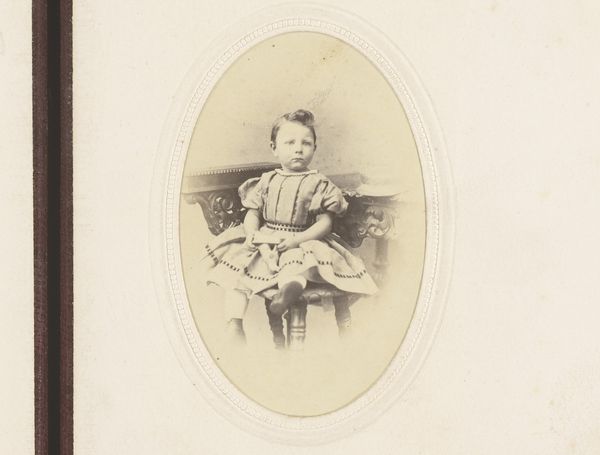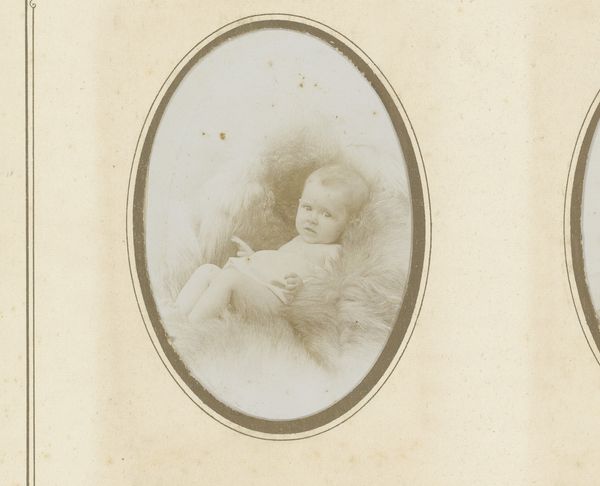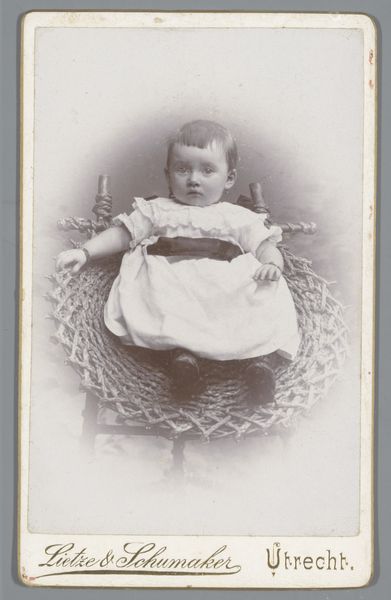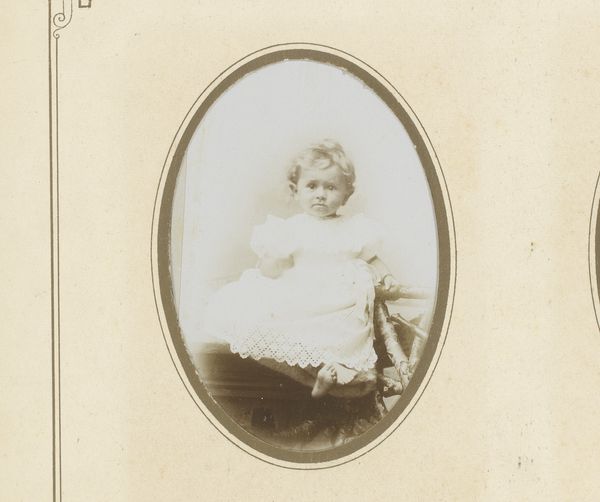
photography
#
photography
#
genre-painting
Dimensions: height 89 mm, width 54 mm, height 101 mm, width 62 mm
Copyright: Rijks Museum: Open Domain
Curator: "Portret van een baby in een jurk op een fauteuil," a photograph, likely dating between 1860 and 1900, credited to N. Hense. It is an albumen print and portrays a classic example of genre painting. Editor: This image has such a sepia, antiquated tenderness. I'm struck by the slight blur—how it softens the baby’s features, like a memory fading ever so slightly. Curator: Yes, the blurring is interesting. This effect can be seen as a product of the longer exposure times common in early photography. However, tonally, the high contrast of the composition also evokes an ethereal and otherworldly feeling, typical of 19th-century portraiture. Editor: I suppose I see what you mean—but something about the softness also imbues this small person with such dignity. The light reflecting on their face—the folds of that little dress… It feels so intentionally sentimental. A real embrace of new photography techniques and what they could uniquely render. Curator: In terms of semiotics, the chair can be read as a symbol of domesticity, a formal representation of the family unit and values associated with stability during this era. Also, note the oval shape around the portrait; the structure provides both closure and perhaps denotes a portal into another time. Editor: A portal, yes! Nicely put. Because as an artist myself, looking at this portrait just fills me with thoughts about my mother’s photo albums—these carefully staged portraits. I’m sure that photographer had no idea that generations later, a photograph like this one, with the baby in their dress, would resonate like this…a poignant mirror of love across the decades. Curator: Precisely, and in observing closely, the image itself becomes a powerful symbolic structure that is reflective of the artist's capacity to transform the ordinary. Editor: Ultimately, this is the magic: To take a normal moment and suspend it within light, chemicals, and paper—or maybe… pure sentiment!
Comments
No comments
Be the first to comment and join the conversation on the ultimate creative platform.
